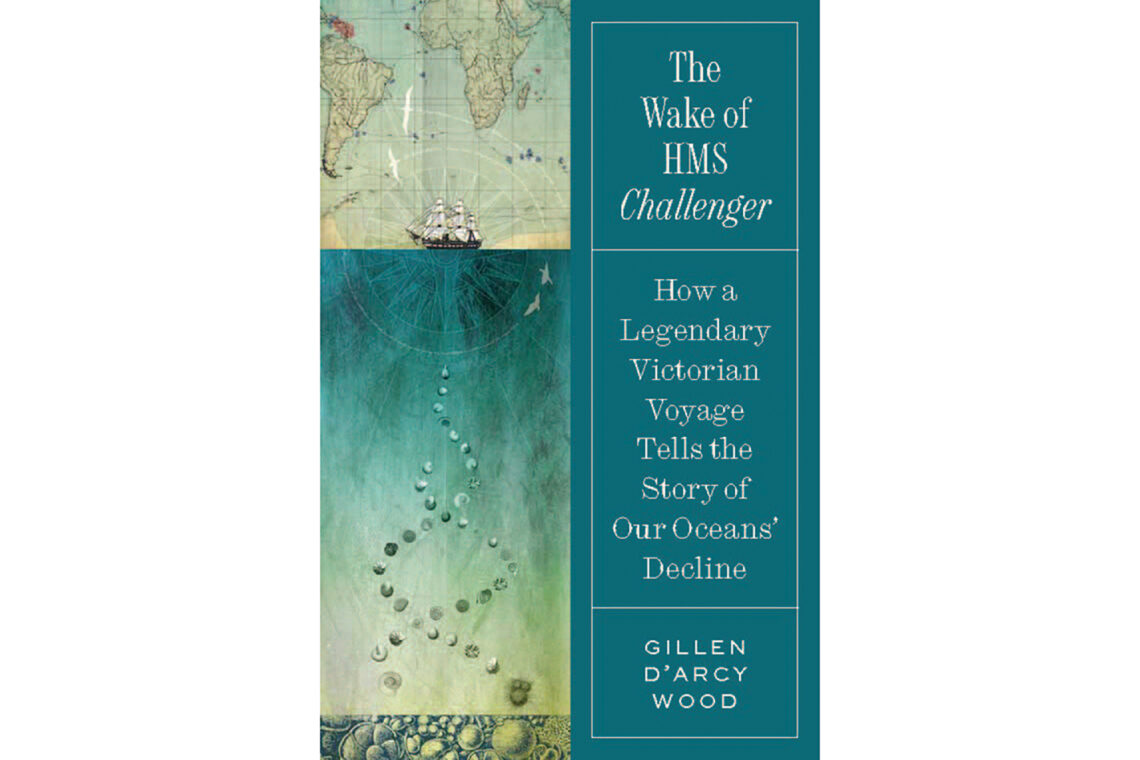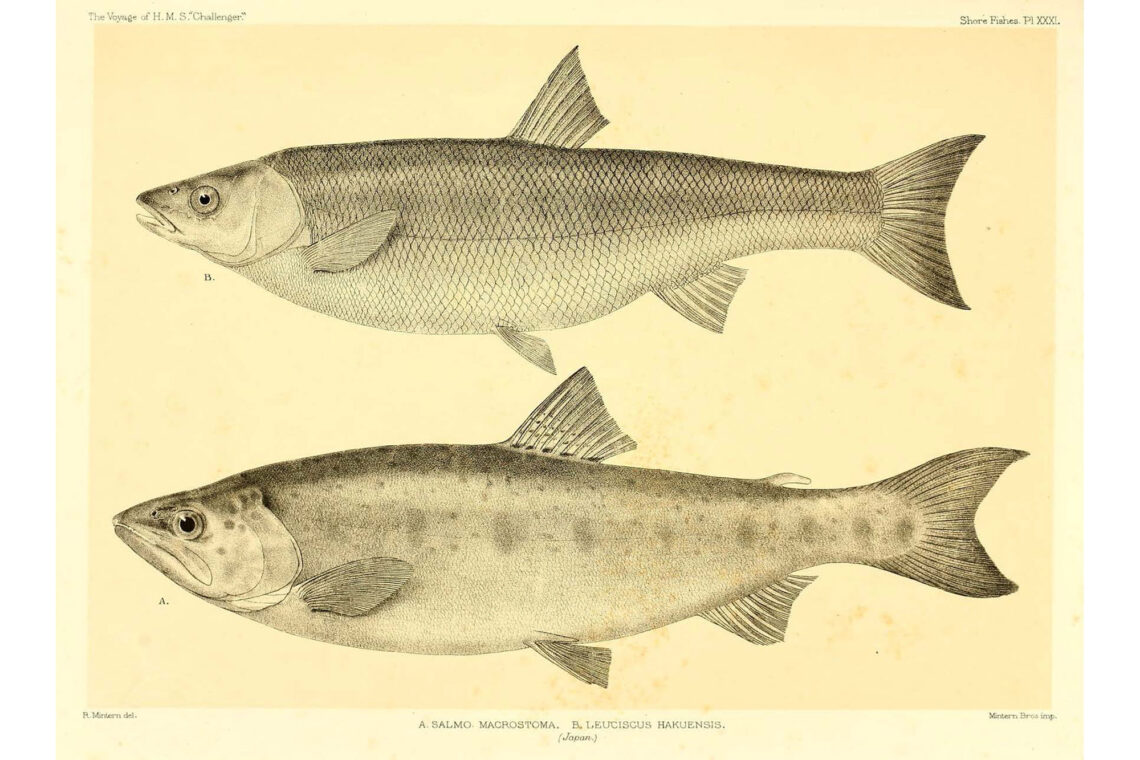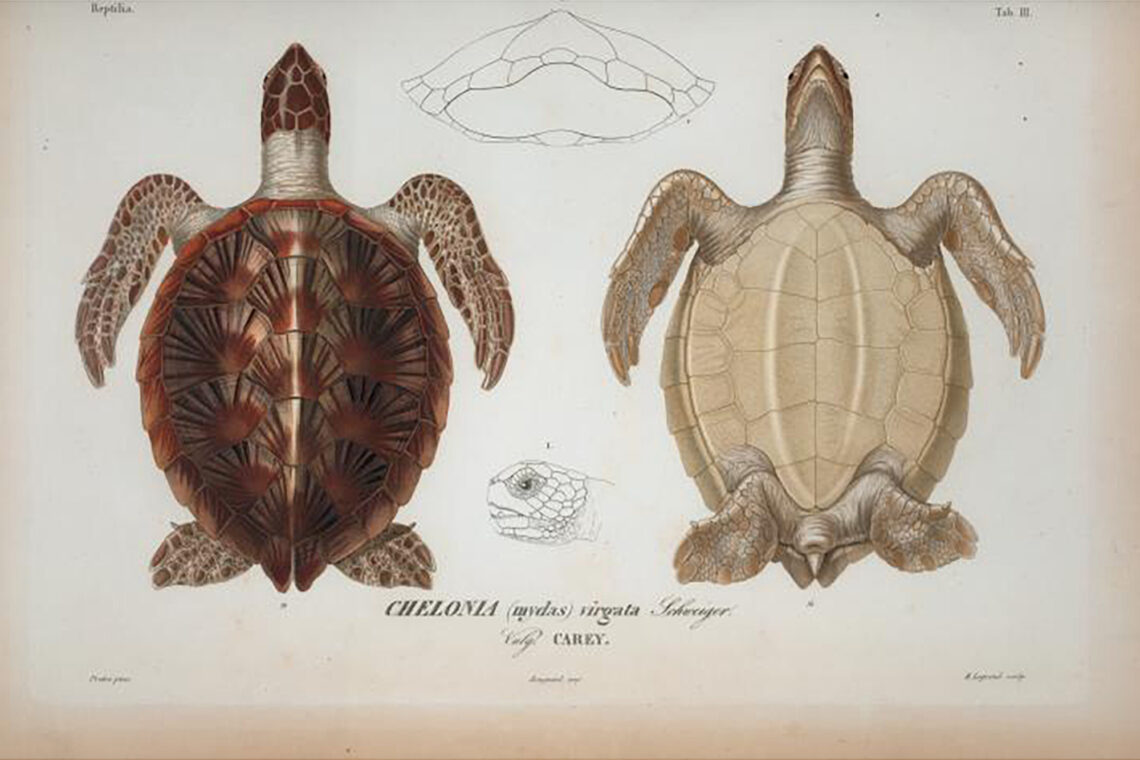The voyage of the HMS Challenger in the 1870s was a sprawling 3-1/2-year expedition to explore the world's oceans. The scientists aboard the vessel collected 100,000 specimens of sea creatures, discovered 5,000 new species, mapped the ocean floors and took hundreds of measurements of sea temperature and chemistry that formed the basis of the discipline of oceanography. The data collected by the Challenger provide a snapshot of the preindustrial oceans and a way of measuring how much they've changed.
University of Illinois Urbana-Champaign English professor Gillen D'Arcy Wood wrote about the expedition in his book "The Wake of HMS Challenger: How a Legendary Victorian Voyage Tells the Story of Our Oceans' Decline." Wood is a historian of 19th-century environmental history and science and the director of the environmental writing program at the Institute for Sustainability, Energy and Environment.

"The plants and animals they found and the amazing undersea geography that was completely unimagined before has been so important to 20th century science," Wood said. "What attracted me to this was its singularity. It's the first research mission of its kind and one of the great discovery expeditions."
Wood previously created a comprehensive online database of the scientific information collected by the Challenger as part of his Oceans 1876 digital project. His book on the Challenger expedition is the second part of the project. In the book, Wood focused on sea creatures, with each of the chapters featuring an animal, plant or phenomenon. He chose creatures that were charismatic; that were the subjects of enough scientific research that he could tell the story of their history, biology and behavior; and that were threatened or endangered.
"I also was looking at the Challenger and its legacy as a unique snapshot of oceans 150 years ago," Wood said.

The expedition's scientists took temperature readings at the surface and at various depths at 500 different locations where they stopped to take samples. They also measured ocean chemistry and acidity and produced the world's first salinity map of the ocean.
The HMS Challenger was a hybrid sail/steamship, and its expedition took place just prior to a historical turning point when ships become solely steam powered and were no longer constrained by tides or weather, leading to an exponential growth of commercial fishing.
Wood called the enormous cache of scientific information that the expedition collected a "data vault of preindustrial conditions," providing baseline information that makes it possible for scientists today to chart changes in the ocean, such as acidification, warming temperatures, changes in habitat, plastic pollution and the effects of overfishing and trawling technology.
Among the principal discoveries made on the Challenger voyage were metallic nodules on the ocean floor, made by the accumulation of layers over millions of years and containing rare earth minerals, which are now the focus of deep-sea mining.

Another major discovery was the Challenger Deep - the deepest part of the ocean, 5 miles below the surface and part of the Mariana Trench. The expedition was the first to map the ocean floor and find that it was not a flat, featureless terrain, but included undersea mountain ranges that were biodiversity hot spots, Wood said. That work led directly to the later understanding of plate tectonics, he said.
"Part of the fun of writing this was that they were continually amazed. They thought the deep sea might be a flat wasteland or a museum of prehistoric creatures, unchanging since the beginning of time," he said.
A few miles down from the ocean surface, the scientists discovered a large, blind, bright red lobster that seemed to have remnant eyes that were no longer functional. The lobster was named for a young scientist on board who published a paper about it but died before the voyage ended. Such discoveries set off conversations about adaptation, Wood said. "We have to think about the voyage in conversation with Charles Darwin," he said.

The book's descriptions of the voyage were drawn from firsthand accounts. The University of Illinois Library has a copy of the 50-volume report of the expedition's findings in its collection. Wood studied those, and he also spent several months at London's Natural History Museum, reading the expedition logs and the diaries and journals of the ship's scientists and crew. He discovered a journal of a ship's officer that has never been referenced before in Challenger literature. The daily entries over 3-1/2 years filled hundreds of pages and gave detailed descriptions of life aboard the ship, Wood said.

"I wanted to create an atmosphere of what it was like to be on a voyage of discovery in the 1870s," he said. "He described the doldrums and how hard that was, running out of water and their clothes and boots turning moldy because it rained on them all the time. He described the mist rising from the ocean's surface in the morning. Those kinds of details are priceless."
Wood also examined many of the specimens collected by the Challenger's scientist and housed at the London museum and at the University of Edinburgh in Scotland, the research headquarters of the expedition.
One of Wood's favorite sea creatures is the green turtle, which the expedition found in its last port of call, Ascension Island in the southern Atlantic Ocean. The turtles live along the Brazilian coastline but migrate to Ascension Island to breed.
"It's been called the greatest masterpiece of navigation in nature, finding this tiny little dot in the middle of the Atlantic," Wood said.
The turtle was ubiquitous when Christopher Columbus first arrived in the Americas, with an estimated population of 80-90 million. Ships sometimes had to be halted because migrating turtles clogged the waters, Wood said. The turtles were a major source of food for Caribbean plantation economies, which devastated their population. But after conservation policies were passed in the 1970s to protect them, their numbers began to rebound.
"It's a lesson that basic protections do work," said Wood, who was glad to end the book on a hopeful note.

The voyage and its findings are not as celebrated as the first expedition to the South Pole or the exploration of Africa because humans have a terrestrial bias that leads them to think more about land masses than the oceans, Wood said, but "one of our challenges in the 21st century is to push back against that terrestrial bias and think more holistically about the planet as an aquatic planet."
The book on the Challenger expedition is the third of his eco-trilogy. His 2020 book "Land of Wondrous Cold: The Race to Discover Antarctica and the Secrets of its Ice" tells the environmental history of Antarctica through stories of the first explorations of the continent. He also is the author of the 2014 book "Tambora: The Eruption that Changed the World," about the rapid climate deterioration set in motion by the massive 1815 eruption of an Indonesian volcano.






